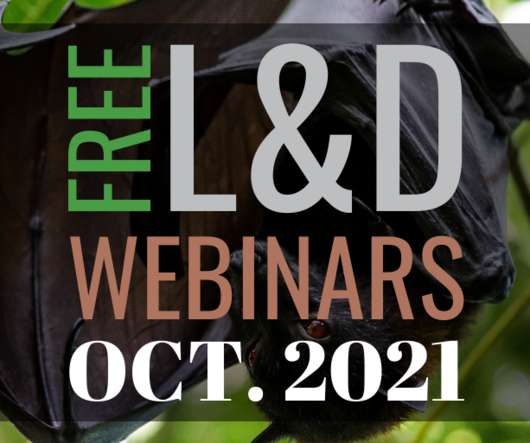The Phillips ROI MethodologyTM – Measuring Data at All Levels – Part 5
CommLab India
OCTOBER 20, 2016
This blog is the 5 th part of the Kirkpatrick series that I have been writing about over the last few weeks. Part 1 , Part 2 , and Part 3 of this series dealt with the Kirkpatrick Model of evaluating a training program. The learner’s intent to put into use all the knowledge gained during the training program. Level 2: Learning.















Let's personalize your content